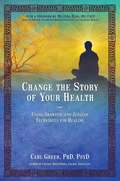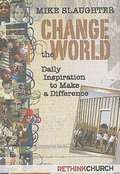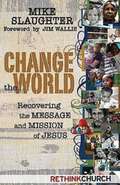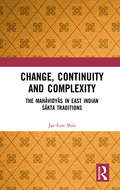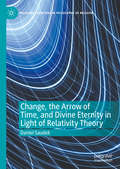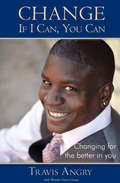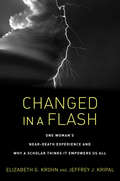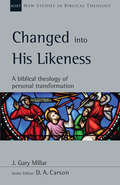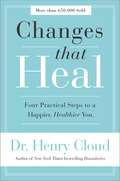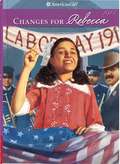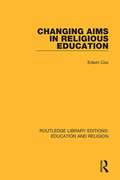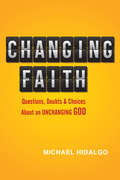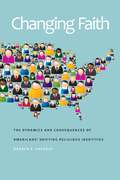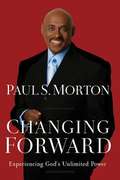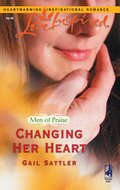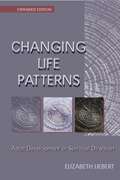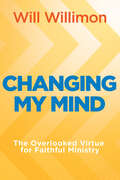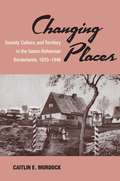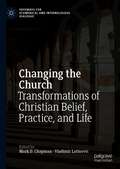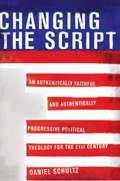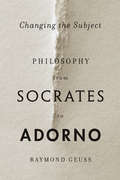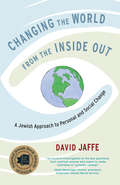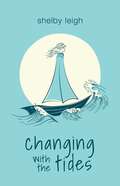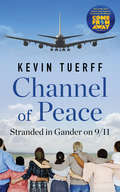- Table View
- List View
Change the Story of Your Health: Using Shamanic and Jungian Techniques for Healing
by Carl GreerThe story of our health is more in our control than we might think, according to clinical psychologist, Jungian analyst, and shamanic practitioner Carl Greer, PhD, PsyD. We can not only reframe our experiences but actually experience less stress, greater well-being, and even better physical health than it might appear if we are willing to identify our health story and begin rewriting it. Through journaling exercises and expanded-awareness practices, many of which involve working with and in nature, and which are influenced by Jungian and shamanic traditions, anyone can tap into hidden resources for healing and work with them effectively. Whether gaining insights and balancing energies outdoors, dialoguing and interacting with the earth or a river or lake, or working with dreams, an inner healer, or a symbol encountered on a shamanic journey, readers will find they are able to learn why they have struggled to change their habits and will be empowered to experience greater wellness within a satisfying health story. "Change the Story of Your Health" focuses on four key chapters of a person’s health story: • Eating and drinking, and weight • Movement/exercise, flexibility, balance, stamina, and strength • Sexuality, body image and acceptance, and changes due to midlife hormonal shifts (commonly known as menopause and andropause) • Management of an acute ailment or symptoms of a chronic condition It also helps readers revise their health stories as their health changes as a result of aging or unexpected challenges. Gaining insights into their health, letting go of what is standing in the way of optimal health and well-being, and bringing in what is needed to make a preferred new health story a reality—all are possible when readers take on the challenge of "Change the Story of Your Health" and begin using the practices regularly.
Change the World: Daily Inspiration to Make a Difference
by Mike SlaughterEverybody wants to change the world, and it all starts with a changed heart. As we grow closer to the heart of Christ, we learn to love others the way he did. Passion for justice and desire to serve flows naturally from a faith centered on the message and mission of Jesus: to bring good news to the poor, release to the captive, and sight to the blind. Grow in world-changing faith with six weeks of inspiring, challenging meditations by Mike Slaughter. Weekly themes:1. Hearing Christ’s Call2. Loving God’s People3. Becoming a Disciple4. Living Simply5. Spreading the Word6. Serving Courageously
Change the World: Recovering the Message and Mission of Jesus
by Mike SlaughterClearly, something is not working. Despite the church’s place of prominence in American culture and the ubiquity of the church in every American town, misconceptions about the faith of Jesus Christ run rampant today. Christians are known more for exclusivity than for love, more for pot lucks than for solving world hunger. It’s time for churches to get over the cruise-ship mentality of being a program-provider, and reconnect with the true message and mission of Jesus: to bring good news to the poor, release to the captives, and freedom to the oppressed. The church is called to be a mission outpost, living out Christ’s ideals in today’s world. Slaughter presents seven choices pastors must make as they consider the future of their congregations. Will you focus on building disciples or tallying decisions? Will you multiply your impact or expand your facilities? Will you step out in courage or comply with the status quo? Your answers to these and other questions determine how your church will focus its time, its energy, and its budget to work for real change in a hurting world.
Change, Continuity and Complexity: The Mah?vidy?s in East Indian ??kta Traditions
by Jae-Eun ShinThe Mah?vidy?s are the representative Tantric feminine pantheon consisting of ten goddesses. It is formed by divergent religious strands and elements: the m?t? and yogin? worship, the cult of K?l? and Tripurasundar?, Vajray?na Buddhism, Jain Vidy?dev?s, ?aiva and Vai??ava faith, ?r?vidy?, the Brahmanical strand of Puranic traditions, etc. This volume is the first attempt to explore the historical process, through which these traditions culminated in the Mah?vidy? cult and the goddesses with different origins and contradictory attributes were brought into a cluster, with special reference to socio-political changes in the lower Ga?g? and Brahmaputra Valley between the 9th and 15th centuries CE. Based on a close analysis of Pur??as, Tantras and inscriptional evidence, and on extensive field research on archaeological remains as well as sacred sites, Jae-Eun Shin discusses the two trajectories of the Mah?vidy?s in eastern ??kta traditions. Each led to the systematization of Da?amah?vidy?s in a specific way: one, as ten manifestations of Durg? upholding dharma in the cosmic dimension, and the other, as ten mandalic goddesses bearing magical powers in the actual sacred site. Their attributes and characteristics have neither been static nor monolithic, and the mode of worship prescribed for them has changed in a dialectical religious process between Brahmanical and Tantric traditions of the region.This is the definitive work for anyone seeking to understand goddess cults of South Asia in general and the history of eastern ??kta traditions in particular. To aid study, the volume includes images, diagrams and maps. Please note: Taylor & Francis does not sell or distribute the Hardback in India, Pakistan, Nepal, Bhutan, Bangladesh and Sri Lanka.
Change, the Arrow of Time, and Divine Eternity in Light of Relativity Theory (Palgrave Frontiers in Philosophy of Religion)
by Daniel SaudekThis book has two aims; first, to provide a new account of time's arrow in light of relativity theory; second, to explain how God, being eternal, relates to our world, marked as it is by change and time.In part one, Saudek argues that time is not the expansive universal 'wave' that is appears to be, but nor are we living in an unchanging block. Rather, time is real but local: there are infinitely many arrows of time in the universe, each with their own fixed past and open future. This model is based on the ontology of substances which can exist in different states, marked by different properties. On this basis, a derivation of temporal precedence and of the asymmetry between the fixed past and the open future is provided. Time's arrow is thus 'attached' to substances, and is therefore a local rather than global phenomenon, though by no means an illusory or merely subjective one.In part two, this model is then applied to the perennial questions concerning the relationship between divine eternity and the temporal world: How can my future choices be free if God already knows what I will do? Can God act if He is not in time? Through the lens of relativity theory, such questions are shown to appear in a completely new light. The book combines insights from theoretical physics with ancient and contemporary philosophy into a unique synthesis, broaching a wealth of key issues including the arrow of time, the evolution of the cosmos, and a physics-based defence of eternalism in philosophical theology.
Change: Changing for the Better in You
by Travis Angry Wendie Davis-GrauerIn a &“brutally honest&” memoir, a motivational speaker, military veteran, and cancer survivor reveals how hope can bring about positive change (Ernie Johnson, Jr., sportscaster TNT/TBS). Change: If I Can, You Can is the story of a man destined for as much turmoil as life can provide. Travis Angry created his identity through childhood rebellion, dropping out of school, being in the military, fighting cancer, marrying, divorcing, raising children as a single father, obtaining a college degree, writing a memoir, and working as a professional speaker. Angry&’s gift is showing others how to resolve fear. His mission is to help teenagers, parents, teachers, coaches, and youth group directors to understand their lives and use hope as a tool for positive change. &“Travis&’ story will make you want to scream and shout. His perseverance and strength is truly inspiring! He is making a positive impact within his family and community. He is truly making a difference one page at a time.&” —Jordin Sparks, singer/actress
Changed in a Flash: One Woman's Near-Death Experience and Why a Scholar Thinks It Empowers Us All
by Jeffrey J. Kripal Elizabeth G. KrohnA fascinating first-hand account of an awakening into a psychic consciousness, paired with a revolutionary analysis by a respected professor of religion When Elizabeth Greenfield Krohn got out of her car with her two young sons in the parking lot of her synagogue on a late afternoon in September 1988, she couldn't have anticipated she would within seconds be struck by lightning and have a near-death experience. She felt herself transported to a garden and engaging in a revelatory conversation with a spiritual being. When she recovered, her most fundamental understandings of what the world is and how it works had been completely transformed. She was “changed in a flash,” suddenly able to interact with those who had died and have prescient dreams predicting news events. She came to believe that some early traumatic and abusive experiences had played a part in preparing her for this experience. Told in matter-of-fact language, the first half of this book is the story of Krohn’s journey, and the second is an interpretation and analysis by respected professor of religion Jeffrey J. Kripal. He places Krohn's experience in the context of religious traditions and proposes the groundbreaking idea that we are shaping our own experiences in the future by how we engage with near-death experiences in the present. Changed in a Flash is not about proving a story, but about carving out space for serious discussion of this phenomenon.
Changed into His Likeness: A Biblical Theology of Personal Transformation (New Studies in Biblical Theology #Volume 55)
by J. Gary MillarWhen it comes to the Christian life, what exactly can we expect with regard to personal transformation? Gary Millar addresses this most basic question in this NSBT volume. After surveying some contemporary psychological approaches to the issue of change and discussions of biblical anthropology, he explores the nature of gospel-shaped change, exposing the dangers of both promising too much and expecting too little. The central part of his study focuses on "life in the middle"���between the change that is brought about when we become Christians and the final change in which we will be raised with Christ. Millar presents a case for reading the "character studies" of major Old Testament figures from Noah to Solomon as depicting a declension throughout their lives and their innate sinfulness and lack of change. This problem is resolved in the establishment of a new covenant, which promises both individual and corporate transformation in the power of the Spirit. This transformation is presented in the New Testament as a rich and complex process, which cannot be contained or adequately described by one set of images. Transformation is real, deep-rooted and far-reaching. In developing an integrated biblical theology of transformation, Millar draws on the contributions of key thinkers, including Augustine, Aquinas, Calvin, Edwards, Owen, Newton, James K. A. Smith and the Biblical Counselling movement. He concludes with a careful synthesis, charting a middle way between the errors of over-realized and under-realized eschatology. Addressing key issues in biblical theology, the works comprising New Studies in Biblical Theology are creative attempts to help Christians better understand their Bibles. The NSBT series is edited by D. A. Carson, aiming to simultaneously instruct and to edify, to interact with current scholarship and to point the way ahead.
Changes That Heal: The Four Shifts That Make Everything Better…And That Everyone Can Do
by Henry CloudIn this ground-breaking book, Dr. Cloud takes the reader step-by-step through the four basic tasks of becoming mature image bearers of God: Bonding to others - Separating from others - Sorting out good and bad in ourselves and others - Becoming an adult -- Dr. Cloud not only explains and describes each task, he also identifies the problems that result when we fail to accomplish that task, and he shows us what changes to make in our lives in order to bring about healing.
Changes for Rebecca (American Girls #4)
by Jacqueline Dembar Greene<P>Rebecca thinks it's a grand idea to make a movie with her cousin Ana, but when gentle Ana plays the role of a cruel factory boss, the fun turns sour. <P>Later Rebecca goes to the factory where Ana's brother and father work, and she's horrified at the terrible conditions but she knows the workers desperately need their jobs. <P>There's got to be a way to make things better at the factory, and Rebecca is determined to do her part--even if it means marching straight into danger. <P>Changes for Rebecca is a children's book for children eight and up but adults can enjoy and learn something valuable from it as well. This book is the sixth book in the Rebecca's six-book series. Each story in the series reveals more about Rebecca, a lively Jewish girl, who grows up in 1914 in New York. The books in the Rebecca series include: Meet Rebecca, Rebecca and Ana, Candlelight for Rebecca, Rebecca and the Movies, Rebecca to the Rescue, and Changes for Rebecca. Every book of the series not only features a fictional, realistic story and illustrations, but also has a historical "Looking Back" section. In this "Looking Back" section, the author describes some of the historical characteristics of Rebecca's 1914 time period in a style which children can understand and adults can appreciate.
Changes: Science (Level Five)
by Purposeful DesignProviding excellence in science instruction for Christian schools worldwide, this text encourages curiosity while helping develop skills of scientific inquiry, challenging projects, diagramming, and focused assignments.
Changing Aims in Religious Education (Routledge Library Editions: Education and Religion #4)
by Edwin CoxFirst published in 1966. The author examines the problems which face the teacher of Religious Education at the time of widespread doubt. He reviews studies of the formation of religious beliefs and attitudes in the young, and suggest a new strategy for the subject, whereby at each stage of education the teacher has a definite but limited aim, appropriate to the children with whom they have to teach.
Changing Faith: Questions, Doubts and Choices About an Unchanging God
by Michael HidalgoA friend of mine told me recently, "There are so many things I am not comfortable with claiming as 100% true, but I cannot say they are 100% false either." It hasn't always been this way for him. Most of his life he believed he had all the answers to any and all of life's difficult questions. He continued, "I do not know what is ahead, but I do know I cannot and will not go back to the faith I have clung to for decades. I am done with it." This was not his declaration of being done with faith, but his recognition that faith had to change. He was going through a change of faith. Many of us are grappling with similar questions. How much can we actually know about God and our world? Who decides what is right and what is wrong? Are right and wrong even the best categories for our world anymore? Whose "truth" is really true? Do I need God to live a life that matters? We have questions not because we reject faith in God, but because we live in a rapidly changing world of new realities, new technology and new insights that demand new answers. And that changes how we believe.
Changing Faith: The Dynamics and Consequences of Americans’ Shifting Religious Identities
by Darren E. SherkatMore than anywhere else in the Western world, religious attachments in America are quite flexible, with over 40 percent of U.S. citizens shifting their religious identification at least once in their lives. In Changing Faith, Darren E. Sherkat draws on empirical data from large-scale national studies to provide a comprehensive portrait of religious change and its consequences in the United States. With analysis spanning across generations and ethnic groups, the volume traces the evolution of the experience of Protestantism and Catholicism in the United States, the dramatic growth of Hinduism, Buddhism, and Islam, and the rise of non-identification, now the second most common religious affiliation in the country. Drawing on that wealth of data, it details the impact of religious commitments on broad arenas of American social life, including family and sexuality, economic well-being, political commitments, and social values. Exploring religious change among those of European heritage as well as of Eastern and Western European immigrants, African Americans, Asians, Latin Americans, and Native Americans, Changing Faith not only provides a comprehensive and ethnically inclusive demographic overview of the juncture between religion and ethnicity within both the private and public sphere, but also brings empirical analysis back to the sociology of religion.
Changing Forward
by Bishop Paul MortonWell known bishop and church leader Paul S. Morton Sr. draws on the Old Testament story of the Israelite's exodus from Egypt and time honored spiritual principles and truths to explore how God's power and presence can bring about much-needed spiritual change. First, spiritual change does not come easily and is often preceded by conflict, as well as strife as believers strive to recognize their own internal struggle. Morton argues that "ground zero" for any spiritual change first happens within. Second, spiritual change must happen at wider level. It requires the members of the community as a whole to shift their thinking, restructure the desires of their hearts, and restore their souls to the point of being one with God. Third, once the community experiences spiritual change, the gate is open for the final step--spiritual growth. This essential step not only results in enriched, progressive intimacy with God, but it also has a lingering effect that fosters and begins the cycle anew in others who desire that same intimacy. In essence, spiritual change eventually becomes a spiritual trait that gets handed down to future generations.
Changing Her Heart
by Gail SattlerWhen lovely Lacey Dachin signed on at the clothing shop next door, it looked as if fun-loving Randy Reynolds had found a potential lunch partner. Meals could be lonely for a single guy, particularly one whose friends were getting hitched right and left!But could the past truly be behind him? He knew Lacey feared the worst. Yet with his life in stand-up shape, the only thing that needed changing now was Lacey's mind.
Changing Life Patterns: Adult Development In Spiritual Direction
by Elizabeth LiebertThis landmark work, originally published in 1992, traces the various stages of spiritual development and discusses how developmental change can be fostered in individual and congregational settings.
Changing My Mind: The Overlooked Virtue for Faithful Ministry
by William H. WillimonYes, pastor, you can (and should) change your mind! The context of ministry continually changes, the surrounding culture changes, and a living God demands constant movement and change. So, pastors and preachers must be prepared to change! Some of the current assumptions about how to persevere in ministry need to be questioned. What ideas and approaches do we need to change, in ourselves and in our ministries? And how, exactly, do we change our minds and practices, when we're called to be steady, stable, and sure? Will Willimon narrates of some of the twists and turns in his own journey as a pastor. These stories and "change-of-mind-and-ministry" points can be helpful to new pastors who are negotiating their own way into future ministry. Novice pastors can receive guidance and encouragement from hearing how a prominent pastoral leader, bishop, author, seminary professor, and well-known preacher for nearly five decades changed, grew, and adapted in Christian ministry. And longtime pastors will find assurance and encouragement as they continue to grow and change, too. The book consists of guidance from an older, experienced pastoral leader to other pastoral leaders, especially young and new ones. Willimon frames the material around the ways he has changed his mind and offers crucial ways that he once thought about ministry compared and contrasted with how he thinks now. He depicts the pastoral vocation as requiring adaptation and revision by its practitioners. Along the way, the book includes conversations with First and Second Timothy as the precursor of this book, an older, experienced pastor (Paul) offering advice to a young, unseasoned pastor (Timothy).
Changing Places
by Caitlin E. MurdockChanging Places is a transnational history of the birth, life, and death of a modern borderland and of frontier peoples' changing relationships to nations, states, and territorial belonging. The cross-border region between Germany and Habsburg Austria---and after 1918 between Germany and Czechoslovakia---became an international showcase for modern state building, nationalist agitation, and local pragmatism after World War I, in the 1930s, and again after 1945. Caitlin Murdock uses wide-ranging archival and published sources from Germany and the Czech Republic to tell a truly transnational story of how state, regional, and local historical actors created, and eventually destroyed, a cross-border region. Changing Places demonstrates the persistence of national fluidity, ambiguity, and ambivalence in Germany long after unification and even under fascism. It shows how the 1938 Nazi annexation of the Czechoslovak "Sudetenland" became imaginable to local actors and political leaders alike. At the same time, it illustrates that the Czech-German nationalist conflict and Hitler's Anschluss are only a small part of the larger, more complex borderland story that continues to shape local identities and international politics today.
Changing the Church: Transformations of Christian Belief, Practice, and Life (Pathways for Ecumenical and Interreligious Dialogue)
by Mark D. Chapman Vladimir LatinovicThis volume, dedicated to the memory of Gerard Mannion (1970-2019), former Joseph and Winifred Amaturo Chair in Catholic Studies at Georgetown University, explores the topic of changing the church from a range of different theological perspectives. The volume contributors offer answers to questions such as: What needs to be changed in the universal church and in the particular denominations? How has change influenced the life of the church? What are the dangers that change brings with it? What awaits the church if it refuses to change? Many of the essays focus on people who have changed the church significantly and on events that have catalyzed change, for the better or for the worse. Some also present visions of change for particular Christian denominations, whether over the ordination of the women, different approaches to sexuality, reform of the magisterium, and many other issues related to change.
Changing the Script
by Daniel SchultzIn recent years, and in particular since the election of Barack Obama, the religious conversation in America has been dominated by calls for progressives to move beyond "partisanship" by reaching out to evangelicals in order to create a "big tent" on social issues such as abortion and marriage equality, despite the lack of evidence that such a strategy can or ever did work. This misguided notion that we can build a shared political and religious center has for the most part shut out true progressive voices, allowing a small conservative minority to control the political and religious debate in this country, with only the most tepid of moral criticism from the religious centrists who claim to desire bipartisan consensus.In Changing the Script, Daniel Schultz, one of the leading progressive religious voices in America today, builds upon the insights of Old Testament scholar and theologian Walter Brueggemann to identify five "scripts" that exercise unseen power in our society: the therapeutic, technological, consumerist, militarist, and conformist. Confronting each of these scripts and the actions of both the Right and the Left that have allowed them to take root in our culture, Schultz voices a perspective that shows what an authentically progressive and authentically faithful religious ideal would truly look like.Daniel Schultz is a pastor in the United Church of Christ and co-founder of the blog Street Prophets (www.streetprophets.com), where he writes as "pastordan." He has contributed to many online sites and publications and is a graduate of the Candler School of Theology at Emory University.
Changing the Subject: Philosophy from Socrates to Adorno
by Raymond GeussFor Raymond Geuss, philosophers’ attempts to bypass normal ways of thinking—to point out that the question being asked is itself misguided—represents philosophy at its best. By provoking people to think differently, philosophers make clear that we are not fated to live within the stifling systems of thought we inherit. We can change the subject.
Changing the World from the Inside Out
by David JaffeAn inspiring and accessible guide, drawn from Jewish wisdom, for building the inner qualities necessary to work effectively for social justice. The world needs changing--and you're just the person to do it! It's a matter of cultivating the inner resources you already have. If you are serious about working for social justice and change, this book will help you bring your most compassionate, wise, and courageous self to the job. Bringing positive social change to any system takes deep self-awareness, caring, determination, and long-term commitment. But polarization, the slow pace of change, and internal conflicts among activists and organizations often leads to burnout and discouragement among the very people needed to make a difference. Changing the World from the Inside Out distills centuries of Jewish wisdom about cultivating and refining the inner life into an accessible program for building the qualities necessary to accomplish sustainable change. Through explorations of deep motivation, inner-drive, and traits like trust and anger, this book engages the reader in a journey of self-development and transformation, demonstrating that sustainable activism is indeed a spiritual practice. Jaffe offers accessible and meaningful guidance for this journey--with exercises, contemplations, and discussion points that can be used individually or in a group.
Changing with the Tides
by Shelby LeighTikTok poet Shelby Leigh presents a moving and inspirational collection of poetry about growing up and embracing all the beauty life has to offer. The perfect gift for fans of Rupi Kaur, Connor Franta, and Cleo Wade.Shelby Leigh breaks up her poignant and reflective poetry collection into two themes: the anchor and the sail. While the anchor explores issues of insecurity, heartbreak, and anxiety, the sail focuses on healing and hope after the storm.With an emphasis on self-empowerment, changing with the tides is an evocative and celebratory set of poems for anyone who dreams of following their heart and embracing their true self.
Channel of Peace: Stranded in Gander on 9/11
by Kevin TuerffOne of the inspirations for the smash hit Broadway musical Come From Away, Channel of Peace is an unforgettable memoir of the extraordinary kindness afforded to passengers whose flights were re-routed to Gander, Newfoundland, on September 11, 2001.When Kevin Tuerff and his partner boarded their flight from France to New York City on September 11, 2001, they had no idea that a few hours later the world — and their lives — would change forever. After U.S. airspace closed following the terrorist attacks, Kevin, who had been experiencing doubts about organized religion, found himself in the small town of Gander, Newfoundland, with thousands of other refugees or “come from aways.”Channel of Peace is a beautiful account of how the people of Gander rallied with boundless acts of generosity and compassion for the “plane people,” renewing Kevin’s spirituality and inspiring him to organize an annual and growing “giving back” day. His unforgettable and uplifting story, along with others, has reached thousands of people when it was incorporated into the Broadway musical Come From Away.
